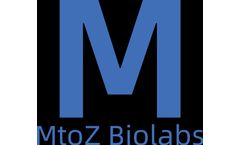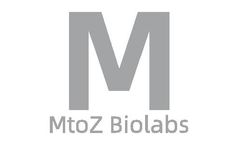Drug Antibody Testing Articles & Analysis
40 articles found
Human ovarian epithelial cells play a crucial role in ovarian function and have become a significant focus in cancer research, specifically ovarian cancer. The ability to study these cells in a laboratory setting has been greatly enhanced through the development of immortalized human ovarian epithelial cell lines, particularly those that utilize the SV40 (Simian Virus 40) large T antigen. ...
Hello, and welcome back to the Colorful Researcher’s blog. In our last blog, Peter discussed how AI is accelerating the drug discovery process and putting pressure on chemists, who must find ways of developing these potential drugs for subsequent testing or production. In his post, Peter explained how small instruments like BUCHI’s Glass Oven G-300 are great for working with small ...
ByBUCHI
The quest for effective therapeutics begins long before a drug reaches clinical trials. One of the cornerstones of this process is drug screening in animal models, which plays a pivotal role in evaluating the safety and efficacy of potential treatments. Animal models offer researchers valuable insights that cannot be obtained through in vitro studies alone, bridging the gap between laboratory ...
In the realm of pharmaceutical research and development, ADME testing services play a pivotal role in evaluating the pharmacokinetics of drug candidates. ADME stands for Absorption, Distribution, Metabolism, and Excretion, which are critical processes that determine the fate of a drug within the body. Effectively assessing these parameters is essential for ensuring the safety, efficacy, and ...
Colorectal cancer is one of the leading causes of cancer-related deaths globally. To advance our understanding of this disease and improve treatment strategies, researchers heavily rely on colorectal cancer cell lines. These cell lines serve as essential models for studying the biology of colorectal cancer, testing new therapies, and exploring the mechanisms of drug resistance. What are ...
When we look at the awe-inspiring architecture of life at the cellular level, one of the most intriguing and essential features is the cytoskeleton. This dynamic network of protein filaments provides structure, facilitates movement, and enables intracellular transport. Advances in technology have revolutionized our understanding of the cytoskeleton and have expanded the possibilities of ...
Drug antibody testing is a laboratory testing method specifically designed to evaluate the immune response of the human body to certain drugs. ...
Binding Activity Testing(1) Enzyme-Linked Immunosorbent Assay (ELISA)Uses the target antigen coated on microtiter plates to test the binding ability of the antibody drug.(2) Surface Plasmon Resonance (SPR)Can detect the binding between the antibody and the target molecule in real-time, and determine the rate ...
Introduction In the ever-evolving landscape of drug delivery systems, nanoformulation stands out as a revolutionary approach. Nanoformulation leverages nanotechnology to create drug delivery systems that can improve the efficacy, reduce side effects, and precisely target disease sites. This cutting-edge technology has garnered significant attention from researchers and pharmaceutical companies ...
Ongoing research and inventions in the field of oncology focus on the development of small molecule drug therapies for use in brain tumor resection. Small molecule drugs are being developed to target and effectively treat brain tumors to improve therapeutic outcomes. Small particles containing compounds that can enter cells and interact with specific targets to inhibit or modulate their ...
Immortalized cell lines and services are of ever-increasing importance in various aspects of biomedicine, toxicology and biotechnology. The cells can be used as model systems in phenotypic and drug screening, high content analysis, target identification, drug development, toxicology testing, gene editing studies, reporter assays. Besides, the immortalized cells have implications for the ...
One of the first steps in drug development and toxicity testing is creating cell models on which to evaluate the effects of chemical compounds on cellular, molecular and biochemical processes of interests. Stem cells or stem cell-derived downstream cells are the best choice to establish cell models to evaluate new compounds because they are patient-matched. Creative Bioarray provides customers ...
The backing layer is prepared with the same polymer solution as the needle tip, and polyvinyl alcohol is used as the backing film-forming material to support the microneedle fractions, so that the backing layer has a tight bond with the microneedle tip, and the backing film and the needle tip can be consistently detached from the mold when the film is uncovered, without the problem of process ...
Drug development is a complex and multifaceted process that involves extensive research and testing to ensure safety, efficacy and quality for human use. One critical element in the drug development process is drug metabolism and pharmacokinetics (DMPK), which refers to how a drug is absorbed, distributed, metabolized, and excreted (ADME) from the body. In vitro DMPK services, along with ...
Bio-ink is a revolutionary material that is rapidly changing the fields of medicine, tissue engineering, and even bioprinting food. This fascinating substance is essentially a type of ink made from living cells and other biocompatible materials that can be used to 3D print complex biological structures. What is Bio-Ink Made Of? The composition of bio-ink can vary depending on the desired ...
ByMatexcel
Creative Bioarray is offering cell immortalization service. Based on our experienced scientist team and elaborate technical platforms, we have been able to successfully immortalize cells from any species and any tissue with the function you need. Our custom immortalization service can significantly extend replicative capacity of your target cells, which saves your time and money over trying by ...
Drug development is a complex and multifaceted process that involves extensive research and testing to ensure safety, efficacy and quality for human use. One critical element in the drug development process is drug metabolism and pharmacokinetics (DMPK), which refers to how a drug is absorbed, distributed, metabolized, and excreted (ADME) from the body. In vitro DMPK services, along with ...
Pluripotent stem cells — cells with the ability to differentiate into nearly any cell type in the body, constituting a significant potential for regenerative medicine. Among these, induced Pluripotent Stem Cells (iPSCs), in particular, have garnered substantial interest from the scientific community due to their ability to be produced from adult cells, eliminating the ethical quandaries ...
Advantages of Single-Cell RNA Sequencing in Drug Discovery Single-Cell RNA Sequencing (scRNA-seq) offers several advantages in drug discovery, primarily through target identification. By analyzing complex tissues and diseases at the cellular level, scRNA-seq allows researchers to identify distinct cell subtypes and their gene expression profiles. This knowledge enhances our understanding of ...
In the fast-paced realm of drug discovery, scientists constantly seek innovative approaches to efficiently and cost-effectively identify potential drug candidates. Virtual screening, a breakthrough computational technique, is poised to transform the pharmaceutical industry. In this article, we delve into the world of virtual screening and explore its remarkable potential to revolutionize drug ...











